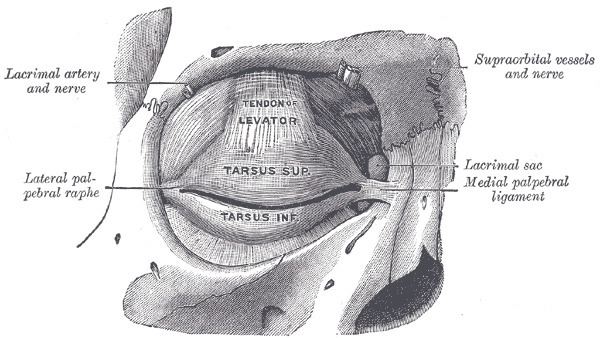 | ||
Origin Underside of levator palpebrae superioris Nerve Sympathetic nervous system Latin Musculus tarsalis superior | ||
The superior tarsal muscle is a smooth muscle adjoining the levator palpebrae superioris muscle that helps to raise the upper eyelid.
Contents
Structure
The superior tarsal muscle originates on the underside of levator palpebrae superioris and inserts on the superior tarsal plate of the eyelid.
Innervation
The superior tarsal muscle receives its innervation from the sympathetic nervous system. Postganglionic sympathetic fibers originate in the superior cervical ganglion, and travel via the internal carotid plexus, where small branches communicate with the oculomotor nerve as it passes through the cavernous sinus. The sympathetic fibres continue to the superior division of the oculomotor nerve, where they enter the superior tarsal muscle on its inferior aspect.
Actions
The superior tarsal muscle works to keep the upper eyelid raised after the levator palpebrae superioris has raised the upper eyelid.
Pathology
Damage to some elements of the sympathetic nervous system can inhibit this muscle, causing a drooping eyelid (partial ptosis). This is seen in Horner's syndrome. The ptosis seen in Horner's syndrome is of a lesser degree than is seen with an oculomotor nerve palsy.
Etymology
from Ancient Greek ταρσός, a "flat surface" typically used for drying.
Eponym
The term Müller's muscle is sometimes used as a synonym. However, the same term is also used for the circular fibres of the ciliary muscle, and also for the orbitalis muscle that covers the inferior orbital fissure. Given the possible confusion, the use of the term Müller's muscle should be discouraged unless the context removes any ambiguity.
